Common Burdock
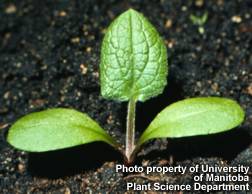 click to enlarge |
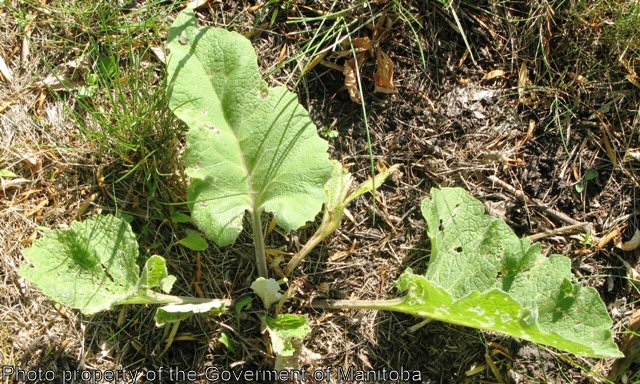 |
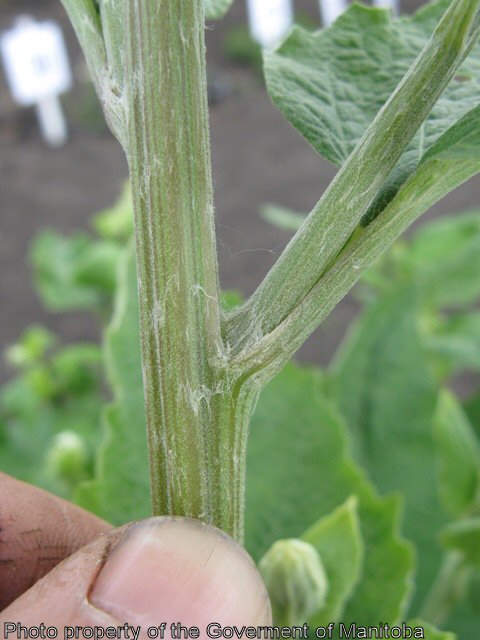 |
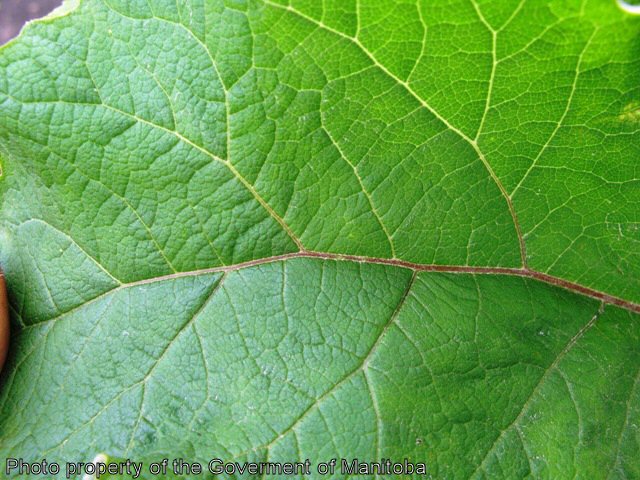 |
 |
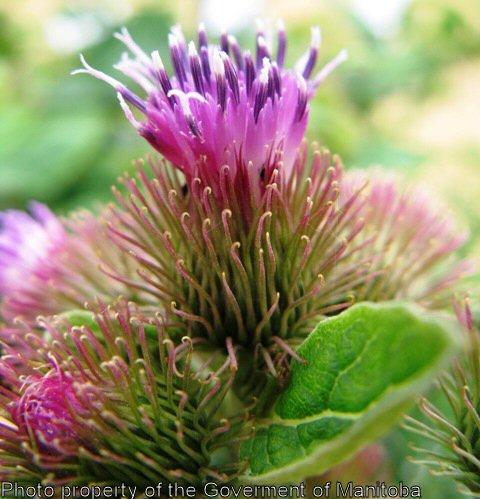 |
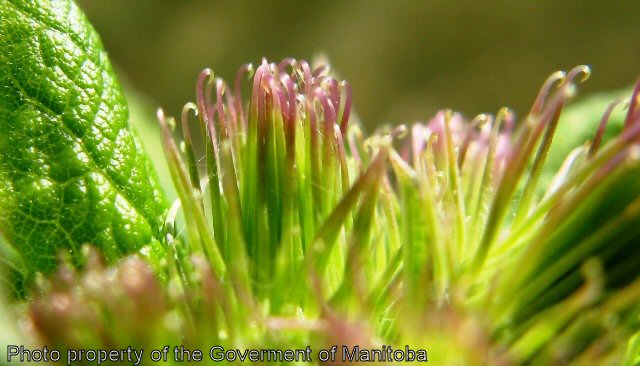 |
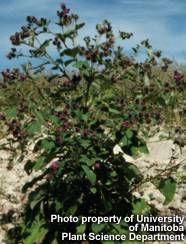 |
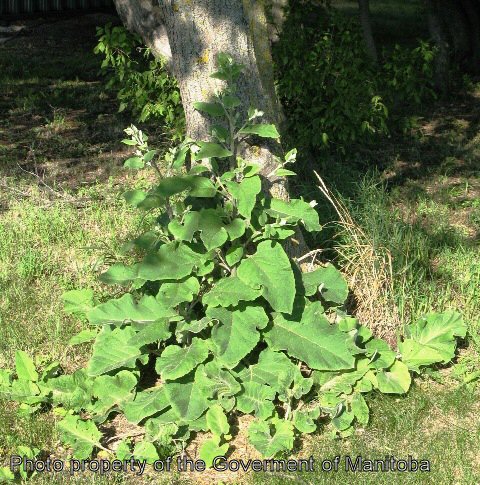 |
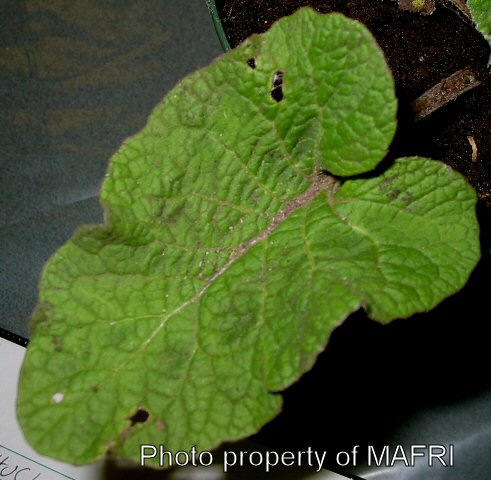 |
Biology
Common burdock is a biennial weed, reproducing by seed. The stems are erect, up to 2 m tall, coarse, branched, and thick. The leaves form a basal rosette the first year. When mature the leaves are alternate, triangular in outline, petiolate, and dark green. The leaf margins are coarsely and shallowly toothed. The flower heads are purple, stalked, 1-1.5 cm thick, numerous, and occur at the ends of branches and axils of upper leaves. The tubular florets are surrounded by bracts and hooked spines making the seed head into a bur. The seeds are 5-6 mm long x 2.5 mm wide, greyish- brown, wedge-shaped, and curved on one or both sides. Seed dissemination is facilitated by the weeds bur-like head.
Scouting Techniques
Scout roadsides, ditches, waste areas, creek beds, pastures, and low lying areas for patches of this weed because it prefers moist fertile soils. Not a common weed in cropped land.
Effects On Crop Quality
Reduces the value of wool due to the seed heads entangling in it. Responsible for tainting milk products if grazed in large quantities. Indirectly affects the development of economically important plants by hosting powdery mildew and root rot.
Control Tips
- cultivation
- resistance shown to monuron-TCA
- Group 4 herbicide application

